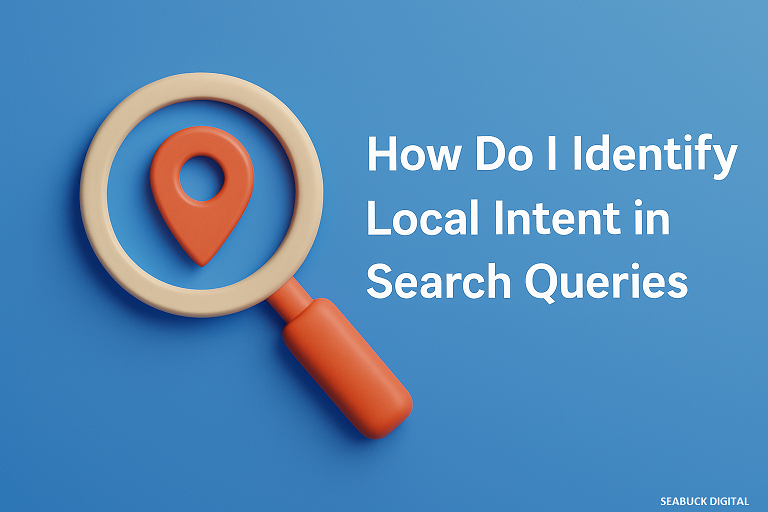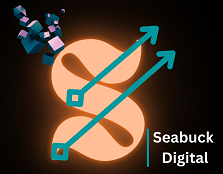
Introduction
Understanding Local Intent in Search Queries
What is Local Intent?
Local intent refers to search queries where users are looking for products, services, or information within a specific geographic area. Simply put, when someone types “best coffee shop near me” or “SEO agency in Brooklyn,” they’re not just looking for any coffee shop or agency—they want one close by. According to Backlinko, Google says 46% of all searches have a local intent. That’s nearly half of every query typed into the search bar!
The Importance of Recognizing Local Intent
Why does this matter? Because users with local intent are typically closer to making a purchase decision. A BrightLocal study found that 78% of local-mobile searches result in offline purchases. That’s a huge opportunity for businesses.
How Local Intent Impacts SEO Strategies
If you ignore local intent, you miss out on highly motivated traffic. Local SEO helps businesses boost visibility in their target geographic areas, bringing in customers who are ready to engage or buy.
Key Characteristics of Local Search Queries
Use of Geographic Modifiers
Keywords like “near me,” “in [city],” or “close by” are dead giveaways. For example, “plumber in Dallas” screams local intent.
Device Type and Location Data
Mobile devices play a massive role here. Research by Think with Google shows that 76% of people who search for something nearby visit a business within a day (Think with Google).
“Near Me” Queries and Their Growth
“Near me” queries have skyrocketed by over 500% in the past few years (Google Trends). This growth underlines just how crucial local intent has become.
Data-Driven Insights on Local Search Trends
Statistics on Local Search Usage
Did you know 97% of people learn more about a local company online than anywhere else? (Taylor Scher) This highlights the need for businesses to sharpen their local SEO strategies.
Mobile Local Search Growth
Mobile devices account for about 61% of total search traffic, and a significant portion of that involves local intent (Statista).
Voice Search and Local Queries
Voice searches are local-heavy. ComScore predicts that by 2025, 50% of all searches will be voice-based, many of which will include local queries like “nearest pharmacy” (ComScore).
Consumer Behavior in Local Searches
BrightLocal’s survey found 79% of consumers trust online reviews as much as personal recommendations, especially in local searches. Reviews play a significant role in local intent signals.
How Search Engines Interpret Local Intent
Google’s Local Ranking Factors
Google uses three core factors: relevance, distance, and prominence (Google Support). These help determine which businesses appear in local results.
Role of Google My Business in Local Intent
Having an optimized Google Business Profile boosts local rankings and helps Google understand your business’s geographic relevance.
How Proximity Influences Results
Google prioritizes businesses physically closer to the searcher. The closer you are, the higher you show up in the results.
Methods to Identify Local Intent in Keywords
Analyzing Keyword Modifiers
Look for specific words: city names, zip codes, or phrases like “best near me.”
Using Google Trends for Local Insights
Google Trends is invaluable for spotting regional keyword popularity. Simply enter a term and adjust the location filter.
Competitor Keyword Analysis for Local Focus
Use tools like Ahrefs or SEMrush to see which local keywords competitors rank for. You’ll uncover gaps and opportunities.
Tools for Identifying Local Intent
Google Keyword Planner
Google Keyword Planner helps you filter by location to find local-specific terms.
SEMrush and Ahrefs Local Features
Both platforms provide geo-specific keyword data and competitor insights.
Google Search Console Geo-Reports
Use the Geo-Reports to understand where your traffic is coming from and spot local opportunities.
The Role of User Behavior Signals
Click-Through Rates in Local Searches
High CTRs signal relevance. Listings with keywords and positive reviews see higher engagement.
Location-Based Conversion Rates
Local queries typically have conversion rates of 28% for on-the-go users (SeoProfy).
Heatmaps and User Interaction Data
Tools like Hotjar show how users interact with local landing pages, revealing optimization opportunities.
Optimizing for Local Intent Once Identified
Crafting Localized Content
Create blog posts, landing pages, and FAQs targeting specific neighborhoods or cities.
Leveraging Local Backlinks
Get featured in local directories or partner with local influencers to build authority.
Optimizing Google Business Profile
Keep your info accurate: business name, address, phone number, and categories matter.
Real-World Case Studies on Local Intent
Small Business Growth through Local SEO
Edelweiss Bakery in San Diego saw a 460% increase in organic traffic after optimizing for local keywords and reviews (SEMRUSH).
Multi-Location Businesses and Local Intent Success
Brands like Starbucks thrive using hyperlocal strategies, tailoring offers based on neighborhood trends and search behaviors.
Challenges in Identifying Local Intent
Ambiguous Keywords
Some keywords are tricky—like “pizza delivery” (is it local or national?). Context matters.
Constant Algorithm Updates
Google frequently tweaks its local algorithm, meaning strategies need regular updates.
Future of Local Intent in Search Queries
AI and Personalization
AI will make search even more hyper-personalized. Expect search engines to predict local intent before users finish typing.
Hyperlocal Targeting Trends
Businesses will increasingly focus on micro-areas, like neighborhoods or districts, not just cities.
Conclusion
Identifying local intent in search queries isn’t just smart—it’s essential. With nearly half of all searches carrying local intent, businesses that tune into these signals can dramatically increase their visibility and conversions. From understanding keyword modifiers to leveraging powerful tools like Google Trends and Search Console, the opportunities are vast. Combine this with optimized local content, accurate listings, and user-centric strategies, and you’ll be well on your way to winning the local SEO game.
FAQs
What is an example of a local intent keyword?
A good example is “best dentist in Miami.” The inclusion of the city name signals local intent.
How does Google determine local intent?
Google uses factors like proximity, relevance, and user location history to decide if a query has local intent.
Can local intent change over time?
Absolutely. Search trends evolve, and what’s relevant locally today might shift tomorrow, especially with seasonality and events.
What tools best track local keyword performance?
Tools like Google Keyword Planner, SEMrush, and Ahrefs are excellent for monitoring local keywords.
How can businesses benefit from identifying local intent?
Understanding local intent helps businesses attract high-intent traffic, improve conversion rates, and dominate their local market.
Read More:

